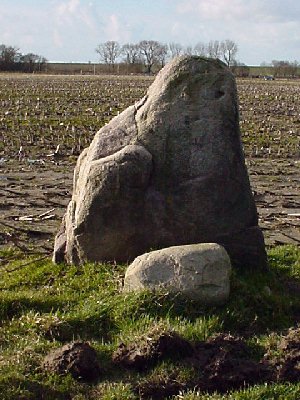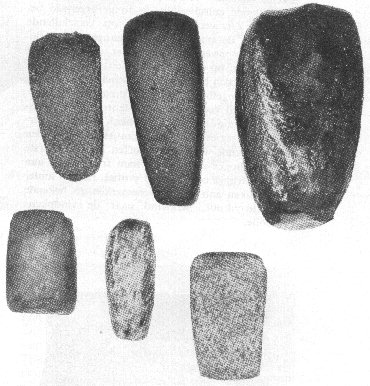
Last change:
30-3-2000;
reactions?
e-mail me
the History of Wieringen
Prehistoric times
|
Not much is known about the earliest inhabitants of Wieringen, but it is safe
to assume that its human history goes back to at least 4 to 5000 years ago. One find even suggests that Homo Sapiens Neandertalensis (the Neandertal Man) once lived in these regions, which would mean the earliest habitation was 70,000 years ago! The island
got his present shape during the penultimate (Riss-) ice age. The hill-like landscape
was formed by the giant icemass, pushing the ground forward. Memories of this time
can be found in most Wieringer gardens in the form of rocks and pebbles carried along
with the ice from Sweden and Finland. These rocks can be more than 3 billion years
old. The biggest rock on Wieringen stands in a meadow at Westerklief, a hamlet southwest
of Hippolytushoef, and is more than 2 meters high (if we include the part underneath the ground...). |
 The stone of Westerklief |
 Not much is found that reminds of the first inhabitants. 5000 years ago Wieringen was still part of the
mainland, but it formed a higher and solid island between the moors that were the
Netherlands then.
Not much is found that reminds of the first inhabitants. 5000 years ago Wieringen was still part of the
mainland, but it formed a higher and solid island between the moors that were the
Netherlands then.
A couple of years ago, there has been an escavation near Slootdorp
in the Wieringermeer (a polder south of Wieringen). Archeologists found a huntingcamp
from the stoneage. From the findings they concluded that the people that stayed there
belonged to the same culture that produced the dolmen in other parts of the Netherlands.
The museum for regional geology and archeology "Het huis van de Aarde" in Den Oever,
has a nice exhibition on the forming of Wieringen and a display of mammut, reindeer
and wooly rhinoceros bones. All these remains were fished up by Wieringer fishermen
from the Northsea.
Stone tools found in the Wieringermeer -->